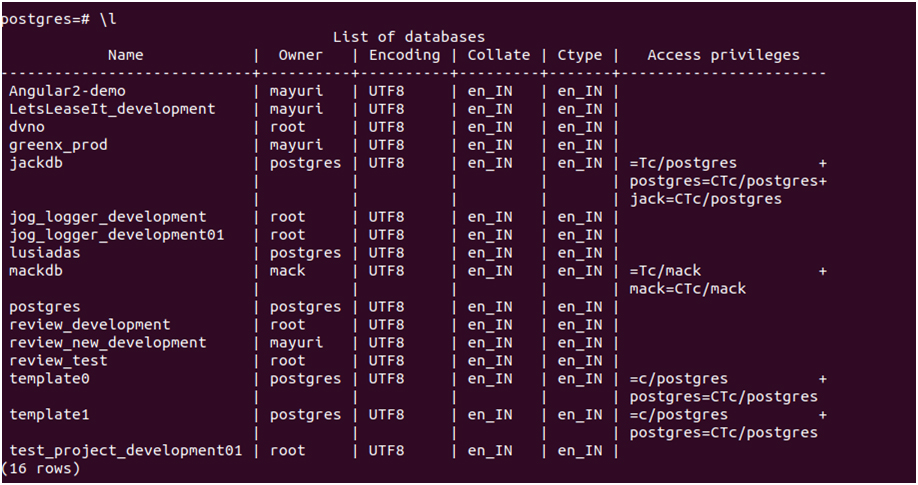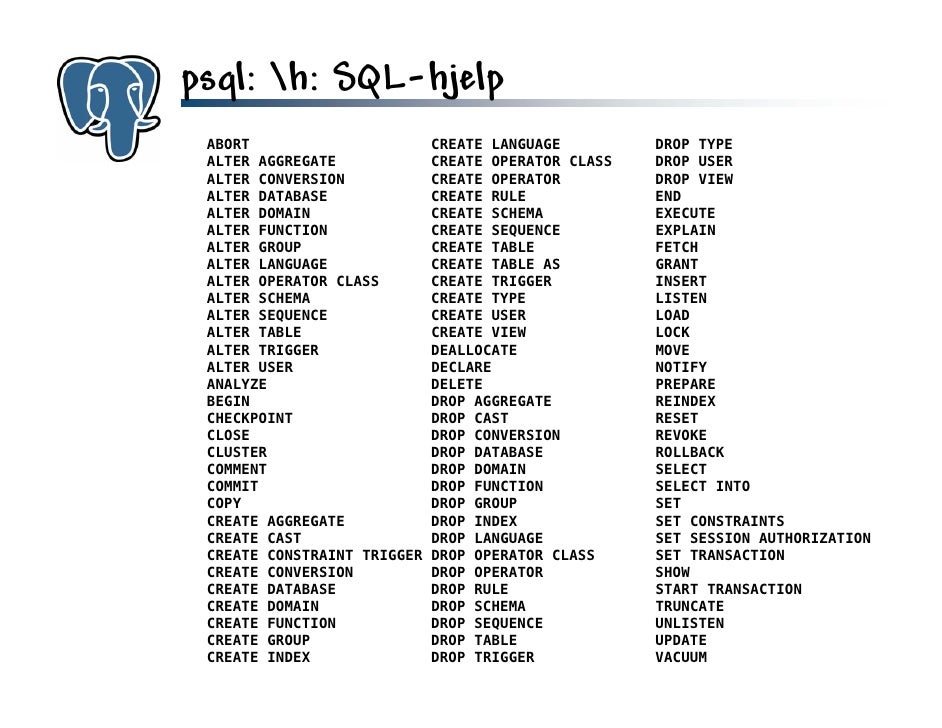
Database size will be shown only if the current user can connect to it. In MySQL, you can show all databases in the database server using SHOW DATABASES statement. PostgreSQL Show Databases. APPLIES TO: SQL Server Azure SQL Database Azure SQL Data Warehouse Parallel Data Warehouse This topic describes how to view a list of databases on an instance of SQL Server by using SQL Server Management Studio or Transact-SQL. I am a new Linux user and never used MySQL database server before.
How do I show the list of databases on my server? Is there any good GUI frontend exists for the same purpose? You can use the mysql command to connect to mysql server and list available databases.
Since you are new to MySQL, it is. Alternatively, input can be from a file. In addition, it provides a number of meta-commands and various shell-like features to facilitate writing scripts and automating a wide variety of tasks. A database is a set of tables, information about those tables, information about users and their permissions, and much more.
Technically these are psql commands, because you issue these commands from the psql command line program. Once we start the psql shell, we will be asked to provide details like server, database, port, username and password. You are now connected to database testdb as user postgres.
You can select your database from the command prompt itself at the time when you login to your database. Psql Tweet What is psql. You can do all these with the psql prompt of postgresql. Here is example of listing databases in postgresql database server. With the psql comman you’ll be greeted by its current version and command prompt.

The short answer is to use the DtoDatabase object within the Distributed Tuning Object (DTO) COM object. CREATE TABLE, ALTER TABLE, and COPY SQL statements of source database. To restore these dumps psql command is enough. How to list all databases ? When preparing the Sql Server Migrations or performing audits is to list all database files on the server.
List of postgreSQL databases. However this approach is not too handy where we have many database on a server. The most common way to exit psql is using a meta-command. Something like list databases . This should get your psql utility running. We cannot drop a database that has any open connections, including our own connection from psql or pgAdmin III.
We must switch to another database or templateif we want to delete the database we are currently connected to. Thus, it might be more convenient to use the program dropdb instea which is a wrapper around this command. Well, it turns out it is known as the law of the instrument. And when I first started programming, I learned Ruby on Rails. Over time, I started acquiring more tools for my tool belt.
But for some reason, when it came to interacting with a database, I kept using the hammer. PgAdmin III ile iki veritabanı ve birkaç tablo oluşturdum, bu yüzden listelenmeleri gerektiğini. We discussed earlier how to backup and restore postgres database and tables using pg_dump and psql utility. Connecting to a database. Once you’re inside psql you can control the database.
Here’s a couple of handy commands. It can be used both for scripting and interactive usage and is moreover quite a powerful tool. Interactive features includes autocompletion, readline support (history searches, modern keyboard movements, etc), input and output redirection, formatted output, and more.
If a command is not specifie then psql will list all the commands for which syntax help is available. To simplify typing, commands that consist of several words do not have to be quoted.
Hiç yorum yok:
Yorum Gönder
Not: Yalnızca bu blogun üyesi yorum gönderebilir.